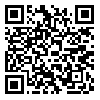BibTeX | RIS | EndNote | Medlars | ProCite | Reference Manager | RefWorks
Send citation to:
URL: http://jpcp.uswr.ac.ir/article-1-286-en.html
2- Department of Clinical Psychology, Faculty of Psychology and Educational Sciences, Allameh Tabataba’i University, Tehran, Iran.
3- Department of Assessment and Measurement, Faculty of Psychology and Educational Sciences, Allameh Tabataba’i University, Tehran, Iran.
Objective: In all societies, adolescents are the most vulnerable age group to addiction. Decision-making styles and attitude toward substances can play an important role in the tendency of adolescents to addiction. The aim of the current study was to investigate the role of decision-making styles and attitude toward substances in predicting the potential addiction among adolescents.
Methods: In this descriptive study, a total of 546 adolescents participated from different high schools in Lorestan Province, Iran that were selected through multiple cluster sampling method. The participants were asked to complete different questionnaires of demographic characteristics, decision-making styles, attitude toward substance, and potential addiction. The obtained data were analyzed through SPSS 16. The Pearson correlation coefficient and regression analysis were used for determining the relationships between the study variables.
Results: The results of the study indicated that general attitude; beliefs; emotions; readiness for action; avoidant, spontaneous and dependent decision-making styles have significant positive correlations with potential addiction. While potential addiction is correlated negatively with rational and intuitive decision-making styles. Also, the results of regression analysis showed that potential addiction is predictable by the components of the decision-making styles and attitude toward substances. Multiple regression analysis indicated that components of the decision-making styles and attitude toward substances significantly predicted 25.1% and 20.7% of the variance of potential addiction, respectively.
Conclusion: The results of this study showed that decision-making styles and attitude toward substance can explain a high degree of variability to potential addiction among adolescents.Accordingly, teaching rational decision-making style and negative attitudes to substances may lead to improvements in the prevention and treatment of addiction in adolescents.
Received: 2016/11/18 | Accepted: 2017/02/6 | Published: 2017/04/1
| Rights and permissions | |
 |
This work is licensed under a Creative Commons Attribution-NonCommercial 4.0 International License. |







